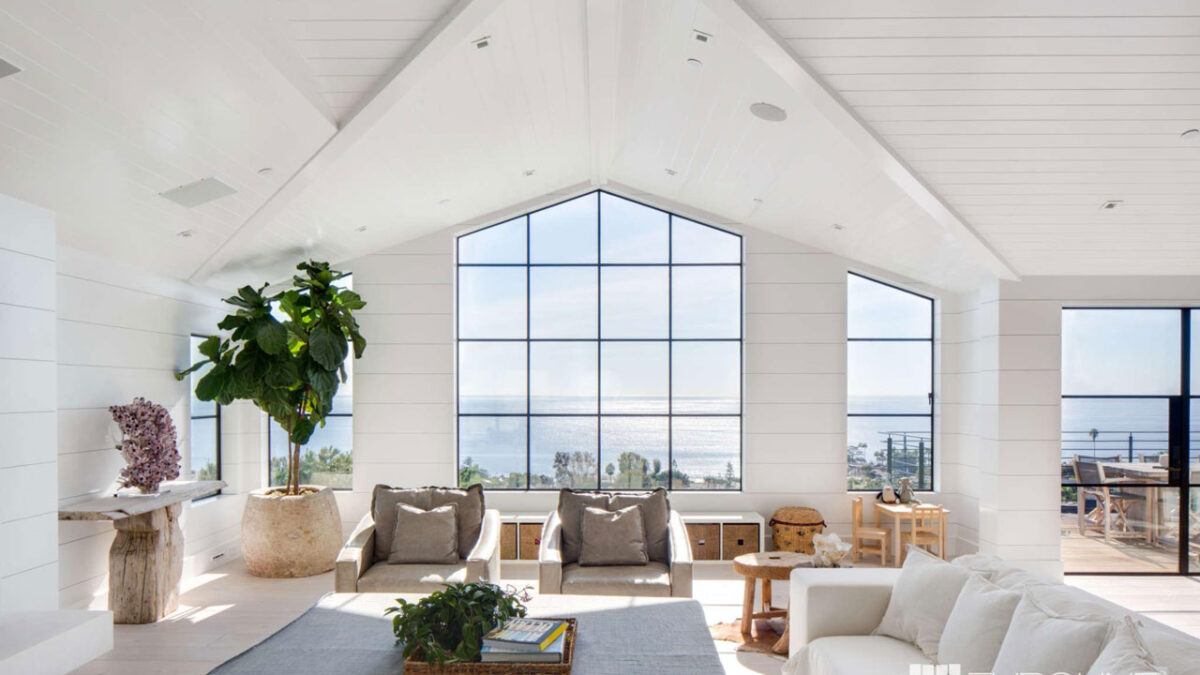The curtain wall, a non-structural cladding system for exterior walls of buildings, has significantly evolved in the construction industry, especially in commercial and high-rise buildings. This transformative component not only serves as a stunning picture wall but also plays a crucial role in enhancing a building’s structural integrity, thermal performance, and energy efficiency.
In this comprehensive guide, we’ll explore the future of curtain wall windows, focusing on innovations, sustainability, and the expected trends that will shape the construction industry.
The Evolution of Curtain Wall Systems
Traditionally, curtain walls and picture windows served as mere external sheaths, providing limited benefits beyond aesthetics and basic protection from the elements. However, with advancements in materials like lightweight aluminum mullions, laminated glass, and insulated glass, modern curtain wall systems have become pivotal in reducing energy consumption and promoting natural light penetration, significantly cutting down on artificial lighting needs.
Innovations in Curtain Wall Technology
Recent years have seen rapid growth in smart glass technologies and energy-efficient glazing systems, leading to the development of dynamic glass and smart technologies integrated into glass curtain walls. These innovations allow for adaptive control over heat transfer and light penetration, contributing to lower energy bills and enhanced occupant comfort.
Companies like AGC Inc. and Schott AG are at the forefront, creating innovative products that reduce thermal bridging, minimize heat loss, and offer improved energy performance. These advancements are not only propelling the glass curtain wall industry forward but are also setting new standards for environmental responsibility by aiming for the lowest carbon footprint possible.
The Rise of Green Buildings and Sustainable Design
The global shift towards sustainability has significantly influenced the curtain wall market. The demand for energy-efficient doors and windows solutions, driven by the need to reduce carbon emissions and energy costs, has led to an increased emphasis on green buildings.
Curtain wall systems, particularly unitized curtain wall systems, are being designed to meet these green standards, incorporating thermal breaks, solar energy harvesting technologies, and high-performance glass units to enhance energy efficiency and sustainability.
Forecast Period Trends and Economic Growth
The forecast period for the curtain wall market is marked by an expected continuation of rapid growth and innovation, fueled by economic growth and the increasing demand for energy-efficient commercial buildings. North America, among other regions, is witnessing a surge in the construction of green buildings, which is subsequently driving advancements in curtain wall technologies and materials.
Cost Savings and Construction Costs
While traditional curtain walls were often seen as expensive options due to high construction costs, the modern curtain wall systems offer significant cost savings over time through reduced energy consumption and maintenance costs. The initial investment in high-quality curtain wall systems is offset by the long-term savings in energy bills and the increased lifespan of the building structure.
Future Trends in Curtain Wall Windows
Looking ahead, the future trends in curtain wall windows include the integration of more advanced smart glass technologies, further improvements in thermal performance, and the development of new lightweight materials that offer enhanced durability and energy-saving properties. The focus will continue to be on creating more sustainable, energy-efficient buildings that can adapt to changing environmental conditions while maintaining aesthetic appeal and occupant comfort.
Future Design Trends for Curtain Wall Windows
As we look ahead, the design trends for curtain wall windows are expected to evolve significantly, driven by advances in technology, changing environmental regulations, and shifting preferences in architectural design. Here are some future design trends that are likely to shape the landscape of curtain wall systems:
Integration of Photovoltaic (PV) Glass
One of the most promising trends in curtain wall design is the integration of photovoltaic glass panels that can generate solar energy. This trend is in line with the global push towards renewable energy sources and sustainability. Buildings will not only consume energy but also produce it, significantly reducing energy costs and contributing to a greener environment.
Enhanced Dynamic and Smart Glass Solutions
The future will see an increased use of dynamic and smart glass technologies in curtain wall systems. These technologies allow glass to change its properties, such as tint and opacity, in response to external conditions or at the touch of a button, improving energy efficiency, occupant comfort, and privacy while reducing the need for blinds or shades.
Biophilic Design Elements
Incorporating nature into architectural design, or biophilic design, will influence the future of curtain wall systems. Expect to see more curtain walls that include natural elements like greenery, natural wood, or water features, enhancing the connection between the indoor and outdoor environments and promoting well-being for occupants.
Minimalist Aesthetics with Slimmer Profiles
The trend toward minimalist design continues to influence curtain wall aesthetics. Future designs will likely feature slimmer aluminum mullions and larger glass panels, creating a seamless, almost invisible frame that maximizes views and natural light.
Advanced Thermal and Acoustic Insulation
As building codes become increasingly stringent regarding energy efficiency and comfort, curtain wall systems will evolve to offer better thermal and acoustic insulation. Innovations may include vacuum-insulated glass units and improved frame designs that minimize heat transfer and noise penetration.
Customization and Personalization
With advancements in manufacturing and design technology, customized curtain wall systems will become more accessible. Architects and building owners will have greater flexibility to create unique façades with varied colors, textures, and patterns that reflect a building’s identity or the company’s brand.
Adaptability and Resilience
Future curtain wall systems will need to be adaptable to changing environmental conditions and resilient to climate impacts. This could involve self-healing materials, modular components for easy replacement and repair, and designs that can withstand extreme weather events.
Elevate Your Architecture with Euroline Steel Windows
Step into the future with Euroline Steel Windows. Enhance your building’s sustainability and aesthetic appeal with our high-quality steel windows, designed to complement any curtain wall system. Contact Euroline Steel Windows today and be a part of the revolution in energy-efficient and sustainable architecture.


